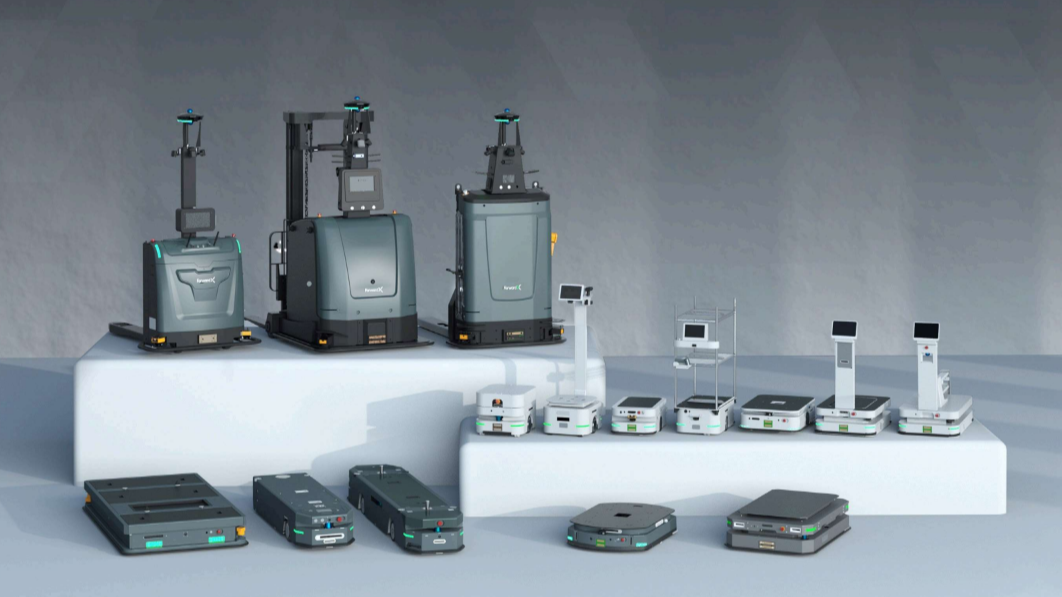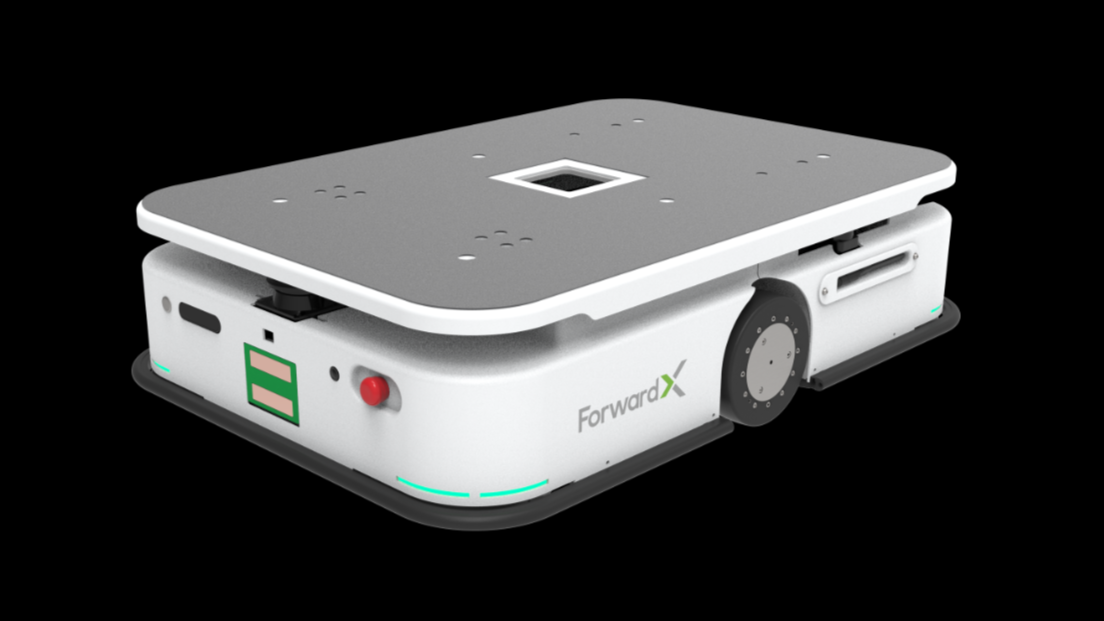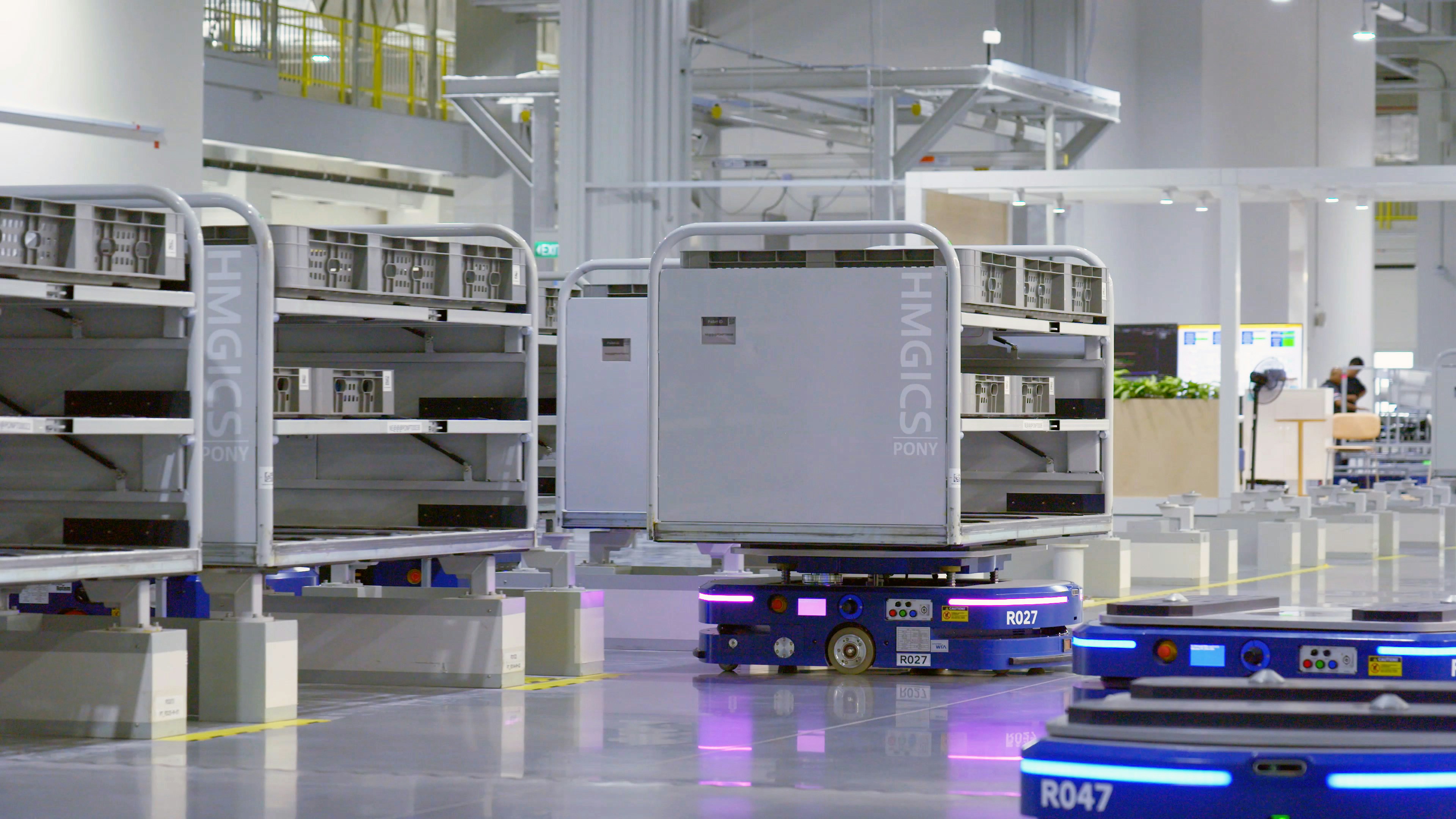ForwardX Robotics Slims Down Flex 600-L AMR for Greater Versatility
ForwardX Robotics has slimmed down its Flex 600-L AMR with the release of the Flex 600-L Slim. This model features a slimmer and larger load surface area for interacting with a wider range of racks and carts.
Mobile robot solutions provider ForwardX Robotics has released the Flex 600-L Slim, part of the company's Flex autonomous mobile robot (AMR) family. These AMRs can be used in bin or case picking applications, production line material handling, or rack manipulation in logistics and manufacturing.

ForwardX Robotics’ catalog is made up of AMR solutions designed for logistics and manufacturing environments. Image used courtesy of ForwardX Robotics
The Flex 600-L Slim
Similar to ForwardX Robotics’ Flex 600-L or Flex 300-L, ForwardX Robotics’ Flex 600-L Slim is a flat-top AMR capable of lifting racks, skids, or any other objects up to 600 kg. Unlike the 600-L version, the Slim version's height is only 245 mm. The load surface encompasses the entire top surface of the AMR and is measured at 950 x 650 mm.
Navigation of an AMR is typically done by laying out a map with software, which the robot can use to travel to its destination. The Flex 600-L Slim has this capability with the addition of naturally developing its map of the environment. Simply give the robot a destination in coordinates and it will find a way there using its own internal sensors and vision systems.

ForwardX Robotics' Flex 600-L Slim AMR. Image used courtesy of ForwardX Robotics
A Slim Solution
The Flex 600-L Slim is CE-certified and uses four LiDAR sensors for object detection. A vision system consisting of SLAM technology is also mounted around the AMR, which aids in a safer robot for operators and facility visitors. Because an AMR is mobile, an Ethernet cable can't be connected for communications. The Flex 600-L Slim utilizes WiFi technology standard with optional cellular network connectivity in either 4G or 5G speeds. This connectivity enables the AMR to move freely around the facility while staying in constant communication.
The AMR comes fully equipped with audio lights to indicate its condition to bystanders. A safety bumper and emergency stop buttons are attached around the perimeter. These devices will stop the AMR in its tracks to prevent damage or injury. When the robot runs low on battery, it needs to dock itself to recharge. A separate vision system, along with QR codes, is used for this purpose.

Unlike other transport solutions, AMRs aren’t fixed in place or on a fixed path. Image used courtesy of Unsplash
The AMR Advantage
The warehouse industry has been using AMRs for years, and now, production facilities are beginning to see the benefits of using them. Unlike an automated guided vehicle, the AMR doesn't need to follow a track or tape; it autonomously determines the path to its destination. This can be especially beneficial when transporting dangerous goods like lithium batteries. Lithium batteries can explode or cause fires if the battery cell is damaged. When transporting batteries with AMRs, special detection sensors can be added to the robot. When a fire is detected, the robot can be directed to a safe area and dispose of the battery cells, making for a much safer work environment.
With the launch of the Flex 600-L Slim, companies now have an even greater versatility of mobile transportation to meet the needs of automated warehouses and production facilities.

 Facebook
Facebook Google
Google GitHub
GitHub Linkedin
Linkedin








